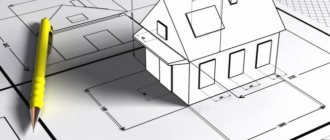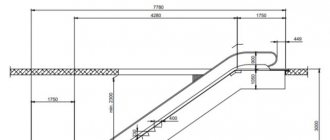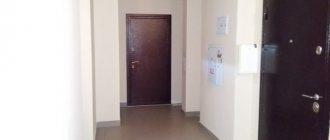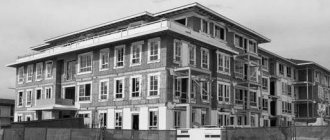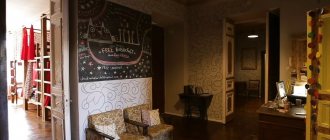The concept of objects of housing rights
The objects of housing legal relations, which include residential premises, are determined by the Housing Code of Russia, and specifically Article 15. It is this concept that helps to distinguish between relationships that are regulated by housing legislation and other relations of a property nature that are regulated by different legal institutions. When the court considers a requirement to vacate premises that do not belong to the housing stock and therefore do not belong to residential premises, then the norms of civil legislation are not used.
In addition, the current legislative framework is constantly modified and changed, in connection with this many controversial issues arise. This is due to the fact that the main part of the problematic issues is regulated by such types of by-laws that are not always available to the average person.
Sanitary and Technical Requirements for Residential Premises
4.10. The concentration of chemicals in the air of residential premises when buildings are put into operation should not exceed the average daily maximum permissible concentrations (hereinafter - MACs) of pollutants established for the atmospheric air of populated areas, and in the absence of average daily MACs, not exceed the maximum one-time MACs or estimated safe exposure levels ( hereinafter referred to as OBUV).
We recommend reading: Documents for Buying a House with Maternity Capital
1.2. These sanitary rules establish mandatory sanitary and epidemiological requirements for living conditions in residential buildings and premises, which must be observed when placing, designing, reconstructing, constructing and operating residential buildings and premises intended for permanent residence.
Definition of residential premises
The concept of “residential premises” is disclosed in a number of legislative acts. Thus, the Civil Code offers a definition of a general type. It connects a number of concepts of the same order, including “apartment”, “residential building”, “part of a residential building or apartment”. In paragraph 2 of Article 15 of the Housing Code, a residential premises is defined as an isolated premises belonging to real estate and suitable for stable human habitation, since it meets the requirements of the law, including sanitary standards. The presence of a connection with common areas, which include the kitchen, corridor, and bathroom, defines the concept of isolation.
Residential premises have special features:
- belong to real estate, which entails an inextricable connection with a plot of land, and any movement of which is impossible without causing disproportionate damage;
- they are isolated, which implies their isolation in space, a separate exit to the stairs, to the street or to a common corridor;
- suitable and intended for permanent residence of people.
Current legislative acts, namely Article 16 of the Housing Code of the Russian Federation, distinguish the types of residential premises: room; apartment and residential building, as well as their parts.
Residential premises are endowed with a special legal regime, which presupposes its use exclusively for its intended purpose. However, Article 17 of the RF Housing Code provides for the possibility of seizure of such premises under a special legal regime.
That is, such a premises can be used for the implementation of individual entrepreneurial activities, as well as activities of a professional nature by citizens who have legal grounds for living in it, provided that this does not infringe on the interests of other residents and the legislative requirements that are put forward for such premises. Residential premises exclude the placement of industrial objects in it.
Housing law
The concept of permission to put an object into operation is given in Art.
55 of the Town Planning Code of the Russian Federation, which states that permission to put a facility into operation is a document that certifies the completion of construction, reconstruction, major repairs of a capital construction project in full in accordance with the construction permit, the compliance of the constructed, reconstructed, repaired capital construction project urban planning plan of the land plot and design documentation. The Plenum of the Supreme Court of the Russian Federation in Resolution No. 4 of June 10, 1980 “On some issues of the practice of consideration by courts of disputes arising between participants in common ownership of a residential building” (as amended on February 6, 2007) explained that for the correct resolution of disputes of this category Special knowledge in the field of housing construction and public utilities is of great importance. Therefore, when preparing a case for trial, it is necessary, on the basis of the documents presented and explanations of the parties, to discuss in each case whether an expert examination should be appointed to give an opinion on the possibility of allocating part of the house and utility buildings in accordance with the owners’ land in compliance with the requirements of town planning regulations. construction, environmental, sanitary and hygienic, fire safety and other rules, regulations, on all permissible options for the allocation or transfer of premises for use, including the options proposed by the parties, on the actual cost of the house and other buildings, as well as the cost of each proposed for allocation parts of the house, the amount of costs required for refurbishment, etc.
Regulatory requirements for residential premises
The requirements for residential premises can be combined into groups:
- compliance with sanitary and epidemiological safety requirements of engineering systems (elevators, heating and ventilation systems, drainage, etc.), equipment and mechanisms located in the premises;
- installation of engineering systems (heating and ventilation systems, drainage, elevators, etc.), equipment and mechanisms located in the premises must be carried out in accordance with the safety requirements established by current regulations, as well as instructions developed by factories that manufacture the equipment , and in addition with hygienic standards, which, among other things, regulate the permissible level of vibration and noise;
- compliance of the premises with fire safety requirements, which are put forward accordingly to the height of the residential building and the floor area within the fire compartment. They must meet the fire safety class of the house and its fire resistance level.
SanPiN -10 Requirements for living conditions in residential buildings and premises
1.2. These sanitary rules establish mandatory sanitary and epidemiological requirements for living conditions in residential buildings and premises, which must be observed when placing, designing, reconstructing, constructing and operating residential buildings and premises intended for permanent residence.
6.1.6. Noise levels during the operation of engineering and technological equipment installed in public premises (commercial, refrigeration equipment, sound-reproducing equipment) should not exceed the maximum permissible noise and vibration levels established for residential premises.
The procedure for declaring premises uninhabitable
Clause 4 of Article 15 of the Housing Code of the Russian Federation establishes the possibility of assigning the status of unfit for living to a residential premises in the manner determined by the Government of Russia.
Clause 33 of the Regulations on recognizing residential premises as unfit for habitation, which was approved by a decree of the Government of the Russian Federation in 2006 (Regulations), establishes one of the reasons that makes it possible to determine residential premises as unsuitable for habitation. This is the invisibility of harmful environmental factors, the cause of which was deterioration resulting from physical wear and tear during the use of the building as a whole or some of its operational indicators, which do not make it possible to ensure safety for the health and life of citizens. The changes that have occurred reduce the level of reliability of the building, its strength and stability characteristics to an unacceptable level.
Clause 7 of the Regulations determines the person responsible for recognizing the residential premises as unfit for living. This process is carried out by an interdepartmental commission, which draws its conclusions based on an assessment of the compliance of a particular premises or house with the requirements established and enshrined in the document.
Section 4 of the Regulations determines the procedure by which a residential building is recognized as unsuitable for living, and an apartment building is considered unsafe and is subject to reconstruction or demolition. The commission evaluates the premises based on the application of its owner.
Clause 8 of the Regulations determines that the local government body of the relevant administrative unit can also recognize private residential premises as suitable or unsuitable for the life of citizens.
In addition, the Regulations define a package of documents that the applicant must provide to the commission to consider the issue of the unsuitability of the premises for living:
- relevant statement;
- copies of documents establishing ownership of the premises;
- a decision issued by a specialized organization that inspected an apartment building, if there is a question of recognizing it as unsafe or subject to demolition or reconstruction;
- a conclusion issued by a design and survey organization after the structural elements of the premises, which are load-bearing and enclosing, have been studied;
- written complaints from citizens about unsatisfactory living conditions.
Sanitary standards and requirements for residential premises
The sanitary documentation, which was adopted and approved in 2010, provides for the procedure for measuring electromagnetic radiation only when the source of this radiation is working, at maximum emissions and from the place that is closest to this source. Measurements are carried out near a metal fence, since it has the ability to relay electromagnetic radiation. During measuring work, be sure to turn off all household appliances, which are also a source of electromagnetic radiation. The specialist conducts an assessment, referring to the instructions for the existing device.
- The territory should not be located outside of communal-industrial and sanitary areas with industrial enterprises, as well as outside construction sites of the first sanitation belt, protected structures and water pipelines supplying citizens with clean drinking water;
- The requirements prohibit the containment of potentially dangerous and harmful substances of chemical and biological origin on the adjacent property;
- A preliminary analysis of the soil must show the absence of elements and microorganisms harmful to humans, and the air must be within the limits established by law and with an acceptable level of radiation in terms of ionization;
- The territory must certainly be free of any physical parameters that affect any person, such as increased noise levels, urban or industrial vibrations, infrared radiation or unsafe electromagnetic fields.
Total living area
To interpret the concept of “total area of living space”, you need to decide which regulations form the basis for this concept. Firstly, this is the Housing Code of the Russian Federation, which in Art. 15 clause 5 establishes how the total area of living space is calculated. The types of such premises are determined in Article 16 of the RF Housing Code. These include residential buildings, apartments and their parts, as well as rooms. In paragraph 3 of Art. 16 of the Housing Code of the Russian Federation, in turn, defines the concept of “apartment”.
Apartments are structural premises of a separate nature, which are located in an apartment building, have access to common areas, consist of one or more rooms and auxiliary premises that can satisfy the household needs of the owner.
Another document that defines the concept of “total area of residential premises” is SNIP 31-01-2003 of 2003, its name is “Residential multi-apartment buildings”. According to this document, the total area of the apartment includes loggias and balconies and other similar premises, since the calculation of the total area is carried out on the basis of the external dimensions of the apartment. At the same time, certain coefficients have been proposed that should be used when calculating: for a loggia - this is 0.5; for balconies and terraces – 0.3; for a cold pantry and veranda - 1.
However, you need to understand that it is the Housing Code that has primacy over all other regulations. And he determines that the total area of the apartment includes: a corridor, a bathroom and toilet, a kitchen, a pantry, a bedroom, as well as other premises, with the exception of balconies, verandas, loggias, terraces. Thus, according to the Housing Code of the Russian Federation, the total area is the sum of all areas of the residential premises, which must be taken into account according to the Housing Code. That is, the total area is formed by the totality of all available rooms and utility rooms of the apartment, with the exception of unheated loggias and similar premises in the form of balconies and terraces.
Author of the article
Sanitary and Technical Requirements for Residential Premises
The ideal option for the operation of the housing stock (practically unfeasible) is prescribed within the framework of the “Rules and Standards for the Technical Operation of the Housing Stock,” approved by the State Construction Committee Resolution No. 170 of September 27, 2003 On the approval of the Rules and Standards for the Technical Operation of the Housing Stock. Resolution of the State Construction Committee of the Russian Federation dated September 27, 2003. No. 170-PG // Russian newspaper. - 2003. - No. 214. - October 23.
The total area of a residential premises consists of the sum of the areas of all parts of such premises, including the area of auxiliary premises intended to satisfy citizens' household and other needs related to their residence in residential premises, with the exception of balconies, loggias, verandas and terraces. Comments on the Housing Code RF./ Ed. A.V. Afonina, E.V. Guryev.- M.: BEK,- 2006.-P.95

